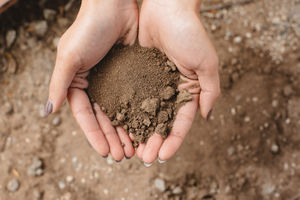Silt: Difference between revisions
| Line 27: | Line 27: | ||
[1] | [1] | ||
National Geographic Society. “Silt.” National Geographic Society, 9 Oct. 2012, www.nationalgeographic.org/encyclopedia/silt/. | |||
[2] | [2] | ||
[3] | [3] | ||
[4] | [4] | ||
[5] | [5] | ||
[6] | [6] | ||
“Silt: Environmental Impact.” Rashid's Blog: An Educational Portal, 8 May 2016, rashidfaridi.com/2016/03/04/silt-environmental-impact/. | |||
Revision as of 23:12, 8 May 2018
Definition

Silt is a granular sediment that can be transported and deposited by water, ice, and wind. Silt particles are larger than clay, but smaller than sand. To be classified as silt, a particle must be between .05 to .002 mm [1]. Similarly to clay, sand, and gravel, silt is found in soil. Silt can also occur as sediment mixed in suspension with water. Because of silt’s spherical shape, it retains a large amount of water. Silty soil is known to be more fertile than other soils, and many species of organisms thrive in it.
Classification
Formation
See also
- Clay
- Loam
- Founders of Soil Concepts
- Humus
- Microorganisms
- Pedogenesis
- Soil
- Soil Textures
- Soil Properties
- Jenny Equation
References
[1] National Geographic Society. “Silt.” National Geographic Society, 9 Oct. 2012, www.nationalgeographic.org/encyclopedia/silt/.
[2]
[3]
[4]
[5]
[6]
“Silt: Environmental Impact.” Rashid's Blog: An Educational Portal, 8 May 2016, rashidfaridi.com/2016/03/04/silt-environmental-impact/.